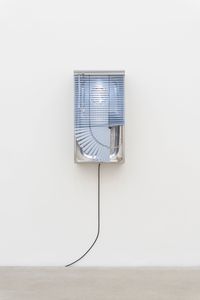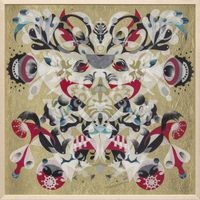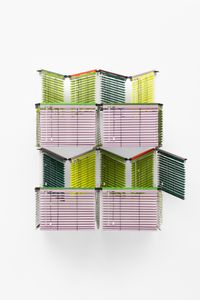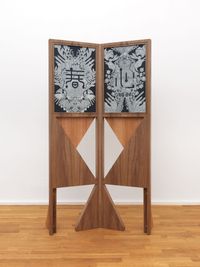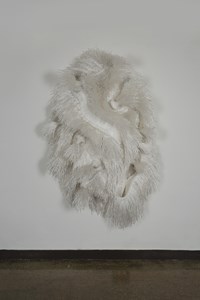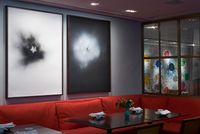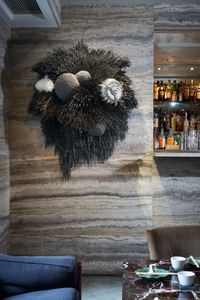Haegue Yang is an artist known for her subtle use of mundane objects within sensory installations. Yang graduated with a BFA from Seoul National University, then attended Städelschule Frankfurt am Main, Germany, receiving an MFA in 1999. Today, she lives and works in Seoul and Berlin.
Read MoreYang’s work often incorporates ordinary items such as lightbulbs, clothing racks, industrial fans and blinds. Of these objects, venetian blinds have become a key part of her most recognised works. Yang first used venetian blinds in 2006 to capture her now longstanding interest in kinetic sculpture. Suspended from the ceiling or arranged in a structure, the blinds usually invite the viewer to navigate through them. Inside the installation, the viewer becomes aware of the play between light and shadow while fans create further motion, heightening the smell and humidity in the air. Objects quotidian in nature mediate the senses, prompting the onlooker to reimagine not only the objects’ function but also the space they create.
An international artist who has spent most of her adulthood outside her homeland, Yang shows particular interests in migration and diaspora, drawing inspiration from various cultures for her work. Instead of considering one culture at a time, however, she makes multiple cultural references in one work. The way she shapes her work resembles the manner of migration; it is as though the sculpture travels and serves as a medium in which elements of different cultures converge. While these elements do not contradict each other, they are disparate—as unlike each other as a Native American medicine man figure and Igor Stravinsky’s ballet and orchestral work The Rite of Spring (1993). Yang merges differences into one entity—a hybrid that transcends time and place.
A common feature many of Yang’s works share is their iterations. Some are part of a single collection, such as Medicine Men (2010) and her ‘Sonic’ sculpture series (2013–ongoing). Others like Storage Piece (2004) and The Malady of Death (2008–ongoing) are reborn throughout the years. With The Malady of Death in particular, Yang demonstrates her versatility by venturing into the realm of performance and conducting a stage reading. Inspired by Marguerite Duras’ 1982 novella of the same name, the reading is as much a new experience for the viewer as it is for the artist herself. Each performance features a different reader and stage, and each iteration holds a different revelation about the novella.
On her philosophy as an artist, Yang explained in her 2014 conversation with Ocula Magazine that art should be an experience, though not necessarily understood. Hence, abstraction is the primary language in her works. However, this does not mean she deliberately creates enigmas. In fact, Yang seeks to invoke in her audience an experience of senses—feelings that may not be understood in words. She calls the process ‘empowerment’: first drawing the viewer into her work—be it an installation of venetian blinds or a collection of sculptures—then granting to the viewer autonomy to freely navigate and realise the space’s full potential.
Before Yang came to prominence internationally, she received recognition as the recipient of the 2005 Cremer Prize and the Baloise Prize in 2007. Her breakthrough was in 2009 when she represented South Korea at the 53rd Venice Biennale, where she was also the first female artist to represent the country. Since then, her works have been exhibited internationally, including dOCUMENTA 13 (2012), the 8th Gwangju Biennale (2010) and the 9th Taipei Biennial (2014). Yang has also been shown in solo and group exhibitions at institutions such as Haus der Kunst, Munich (2012–13) and Bergen Kunsthall (2013).
Sherry Paik | Ocula | 2017
